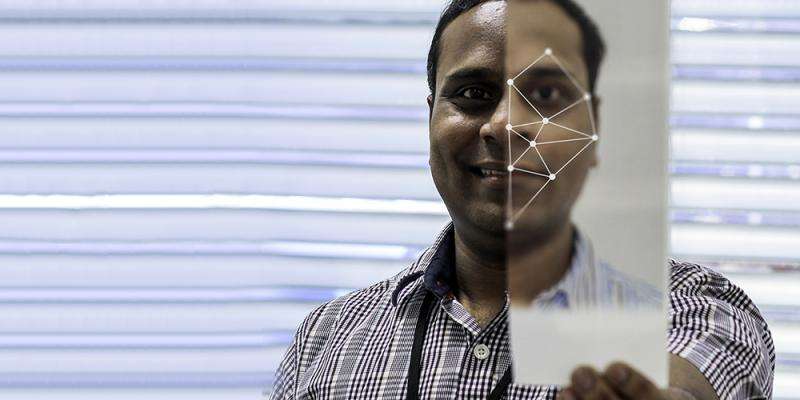Faster airport queues with facial recognition

New technology detects and tracks you from the second you arrive at the airport until you're out of the arrivals hall at your destination.
More and more people are travelling by plane, so automating airport security checks makes sense. The use of biometric features is a way to identify people at airports. Biometrics measures biological patterns—such as fingerprints, iris patterns, head shape or gait.
"When a lot of people gather in one place, queues develop quickly," says postdoctoral fellow Raghavendra Ramachandra at NTNU's Biometrics Laboratory in Gjøvik. "Rather than stop every single person at an airport gate, we've developed algorithms that recognize people's faces, based on electronic passports with a photo and ID number," he says.
This technology allows recognized and identified individuals to be let through automatically. Facial recognition software is already fully developed, and soon the technology company Safran Morpho will test it at several airports worldwide.
Privacy is paramount
But what happens to privacy in this situation?
"Privacy is our top priority. The information on individuals' movements is not stored in the databases. If someone were to hack the databases, they wouldn't be able to reconstruct the data, " says Ramachandra.
Face recognition is the preferred method to identify people at airports, because it is easy for users. It is a means of authentication that does not require contact, and it is not distracting to the user. In actuality, people being identified will not notice anything. One goal of the project is to increase border control security.
Different practices on different continents
Europe has strict regulations for privacy and for how to store information about people, but this is not the case everywhere. Ramachandra says that several countries in Asia have initiated national ID programmes to collect biometric information on everyone in the country.
He says that centralized data storage is not possible in Europe due to the stringent security regulations regarding the storage of personal data.
"As researchers, we try to minimize the risk of personal information going astray. There's always the possibility of being hacked when you save information digitally, but in using biometrics we try to mitigate this risk by avoiding centralized storage," he says.
EU project
Safran Morpho demonstrated the project's facial recognition research results at the FIDELITY conference held in Brussels in December 2015.
The EU FIDELITY project ended in January 2016. Over the last four years, the project developed solutions and new proposals for fast, secure and efficient real-time authentication of individuals at border crossings.
NTNU researchers in Gjøvik have been involved in developing solutions for facial recognition, iris recognition, large-scale fingerprint indexing, privacy and biometric finger vein recognition.
Provided by Norwegian University of Science and Technology





















